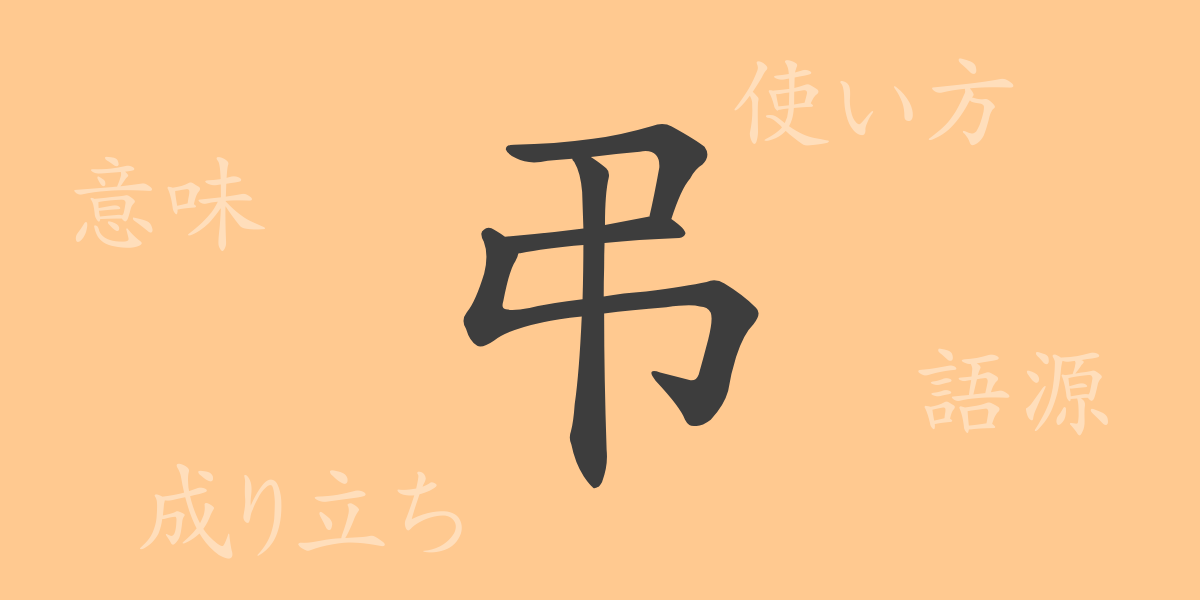The Japanese language is rich with characters, each imbued with history and meaning. The kanji ‘弔(チョウ)’ is one such character, used in special contexts within our lives. This article delves deep into the origins, meanings, and usages of ‘弔’, along with related idioms and phrases, enhancing our understanding of Japanese culture through this intriguing character.
Origins of ‘弔(チョウ)’
The kanji ‘弔’ originated in ancient China, symbolizing the act of mourning the dead by lowering belts or ropes, a ritualistic representation. It is a phono-semantic compound where the ‘弓(ゆみへん)’ radical symbolizes the bow and ‘丨’ adds the meaning of lamentation. In Japan, ‘弔’ is commonly used in the context of funerals and memorial services, signifying mourning.
Meaning and Usage of ‘弔(チョウ)’
‘弔’ primarily means ‘to mourn the dead.’ In Japan, you might see this character in contexts like funerals and memorial services. It can also metaphorically mean ‘to lament sincerely.’ It is typically used in phrases like ‘弔問(ちょうもん)’ or ‘弔意(ちょうい)’, which denote expressions of condolence to the bereaved or the deceased’s family.
Readings, Stroke Count, and Radical of ‘弔(チョウ)’
The kanji ‘弔’ has unique readings and features in Japanese:
- Readings: On’yomi ‘チョウ’; Kun’yomi ‘とむらう’
- Stroke Count: ‘弔’ consists of 4 strokes.
- Radical: The radical is ‘弓(ゆみへん)’, related to the bow.
Idioms, Phrases, and Proverbs Involving ‘弔(チョウ)’
‘弔’ appears in various idioms and phrases, reflecting its profound implications:
- 弔問(ちょうもん): Visiting the deceased’s home to express sympathy.
- 弔辞(ちょうじ): A eulogy read at funerals to mourn the deceased.
- 弔慰金(ちょういきん): Condolence money or compensation paid to the bereaved family.
- 弔い合戦(とむらいがっせん): A battle fought to avenge the deceased.
These phrases and idioms are used in Japanese society and culture to express respect and sorrow for the deceased.
Conclusion on ‘弔(チョウ)’
The kanji ‘弔’ is a symbol used to express deep emotions of mourning. Understanding its origins, meanings, and uses enriches our respect for Japanese funeral customs and memorial traditions. Moreover, knowing its related idioms and phrases enables appropriate expressions in solemn contexts, offering insights into Japan’s traditional and cultural practices through this single character.

























